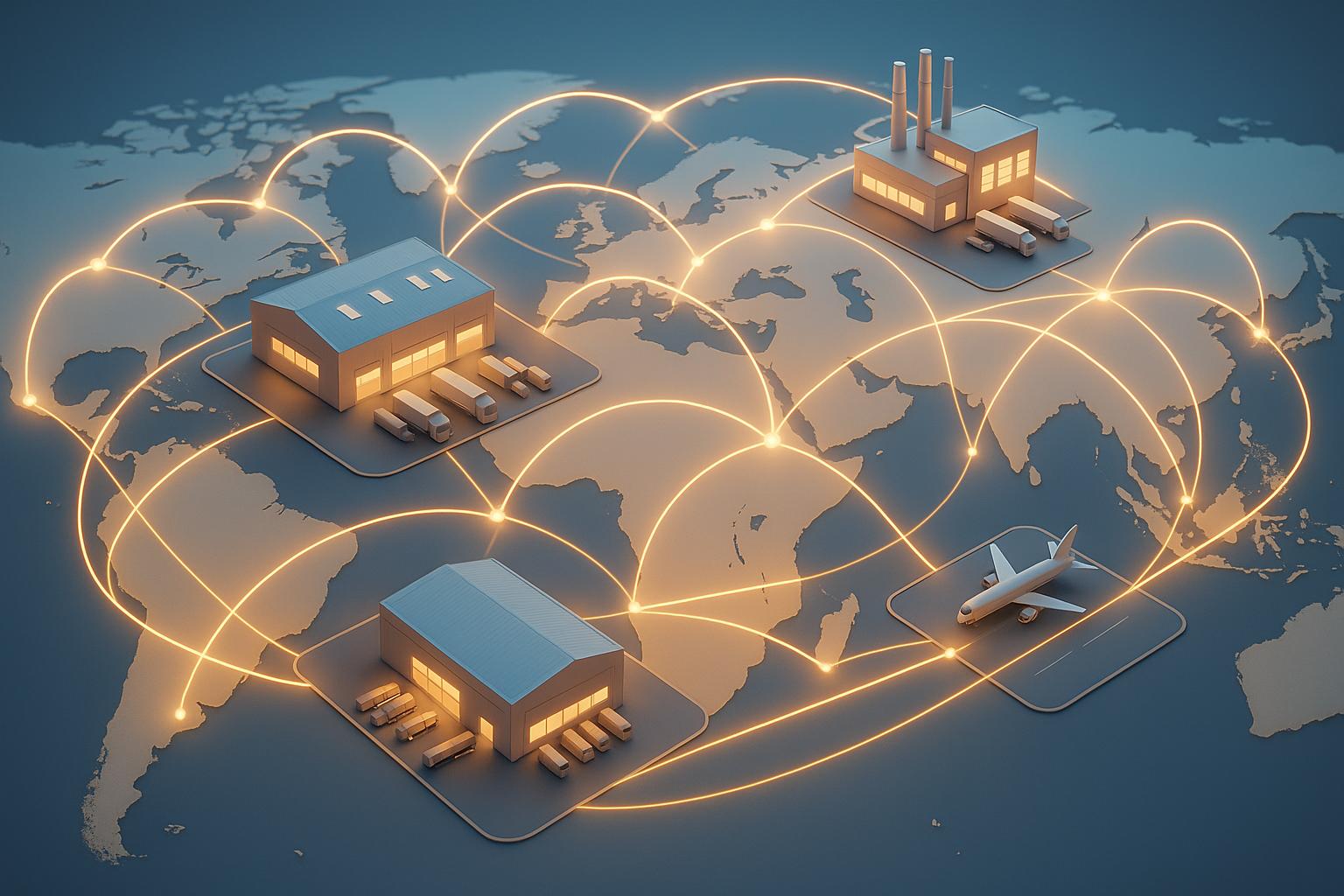How 3PLs Use Software for Reverse Logistics
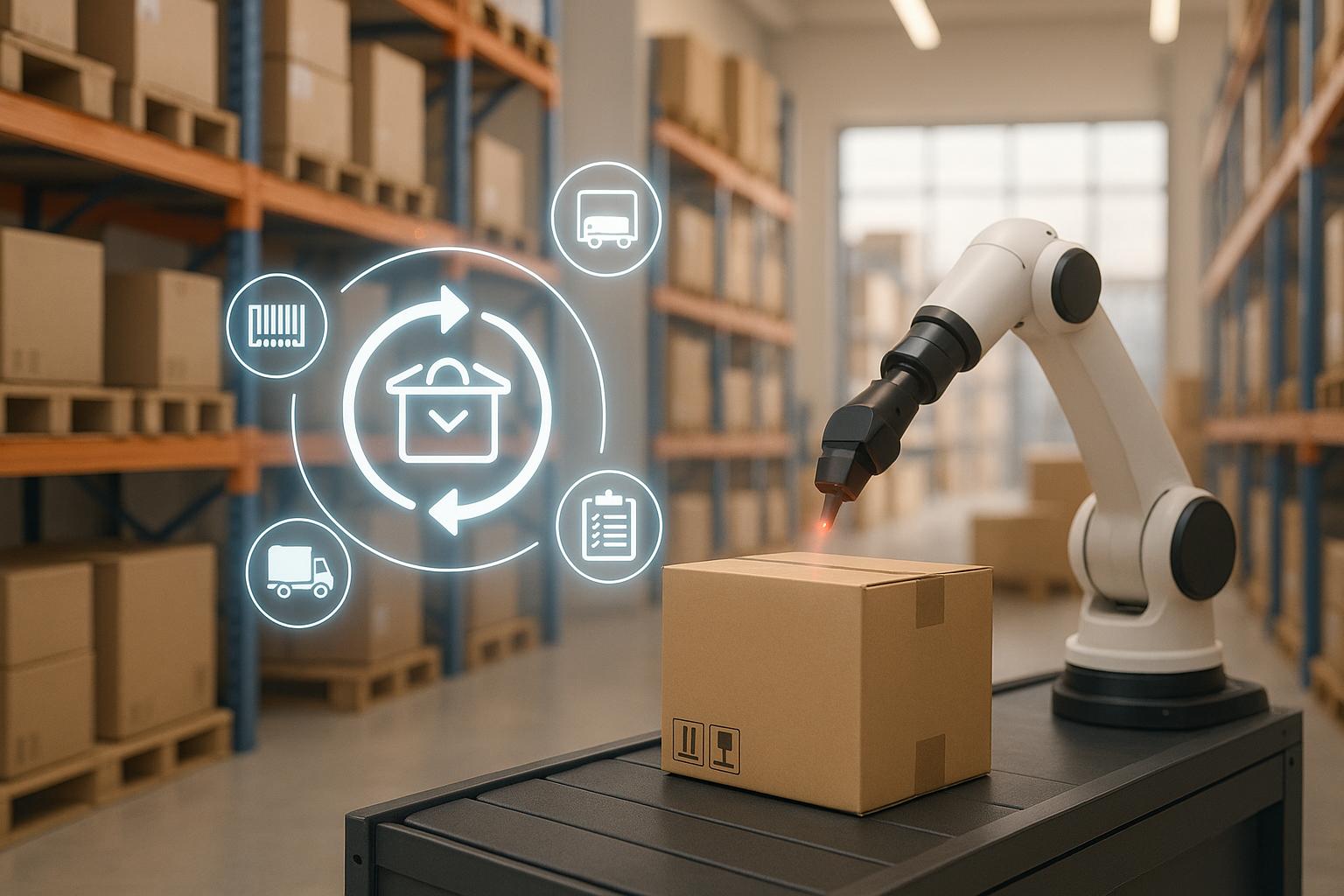
Reverse logistics - managing returns, repairs, and recycling - has become a growing challenge for businesses, especially with rising e-commerce return rates (20-30% online vs. 8-10% in-store). Third-party logistics providers (3PLs) are increasingly turning to software to handle these complexities. Here's how modern tools are solving key issues:
- Automation: Speeds up returns by generating labels, updating inventory, and processing refunds without manual errors.
- Real-Time Tracking: Provides visibility into the return process, helping 3PLs and clients monitor items and address issues quickly.
- System Integration: Connects reverse logistics platforms with warehouse, e-commerce, and shipping systems, reducing data silos.
- Analytics: Tracks metrics like return rates and processing times, enabling better decision-making and cost management.
For example, companies like JIT Transportation use automation and AI to streamline returns, cut costs, and even turn returned goods into revenue opportunities through refurbishing and resale. With these tools, 3PLs can handle higher return volumes efficiently while improving customer satisfaction.
Optoro's Returns Processing Software for Retailer and 3PL Warehouses
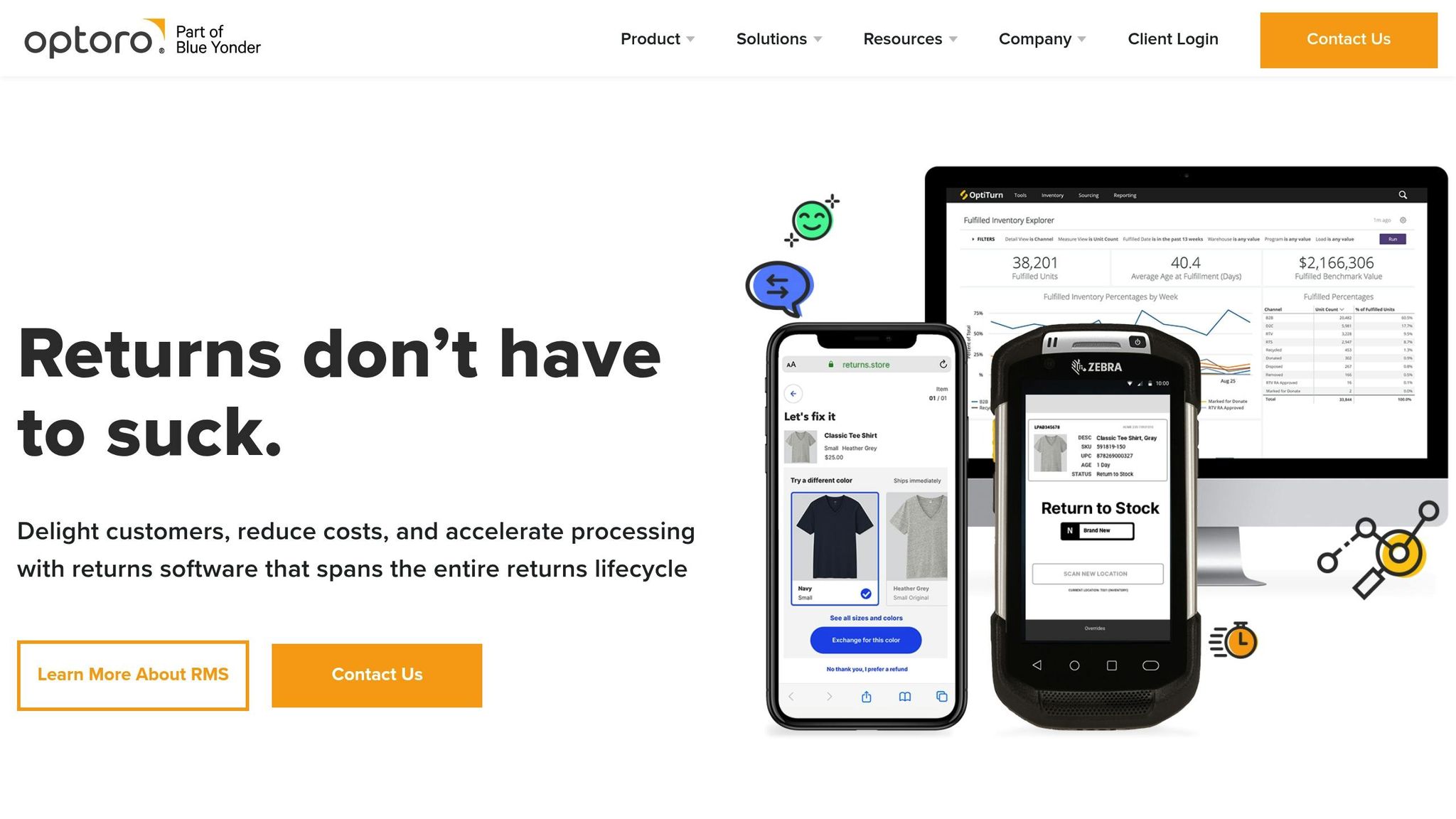
Core Features of Reverse Logistics Software
Reverse logistics software has become a game-changer for 3PLs, offering tools that streamline returns, reduce errors, and improve visibility. By automating processes and integrating with existing systems, these platforms address the common challenges of manual handling, delays, and lack of transparency.
Automated Returns Processing
Automation is at the heart of modern reverse logistics software. These platforms handle every step of the return or exchange process automatically. When a customer initiates a return, the system generates return labels, assigns Return Merchandise Authorization (RMA) numbers, and triggers the appropriate workflows.
Smart algorithms further enhance efficiency by selecting cost-effective shipping options, determining whether to issue refunds or store credits, and routing returns to the correct locations. This reduces delays and eliminates manual errors that often plague traditional methods.
Additionally, automated notifications keep customers and staff informed at every stage. Whether it’s email, SMS, or WhatsApp, updates are sent when returns are received, processed, and resolved. For 3PLs, this means fewer customer service inquiries and more time to focus on essential operations.
Some solutions go a step further by transforming returns into opportunities. For instance, they can recommend alternative products or enable instant exchanges for higher-value items, turning what could be a loss into a revenue opportunity.
Real-Time Tracking and Visibility
Real-time tracking is another standout feature, offering 3PLs and their clients complete transparency throughout the returns process. Dashboards provide instant updates on the status of returned items, from initiation to their final resolution. This level of oversight not only improves operational control but also enables quick problem-solving.
Incident management tools provide a global view of all shipments and returns, flagging delays or irregularities in real time. When issues arise - like missing items or shipment delays - the system notifies the appropriate team, allowing for swift resolution before problems escalate.
For clients, this visibility is critical for managing inventory and planning finances. They can monitor returned items in real time, anticipate restocking needs, and maintain accurate financial records. These insights also help identify patterns, streamline operations, and demonstrate value through clear, data-driven reporting.
System Integration Capabilities
Seamless integration is another key feature that ties everything together, connecting reverse logistics software with warehouse management systems (WMS), enterprise resource planning (ERP) tools, e-commerce platforms, and carrier networks. This integration eliminates the challenges of managing disconnected systems and ensures smooth operations.
For example, WMS integration automatically updates inventory when returns are processed, reducing manual data entry and errors. Once a returned item is inspected and deemed fit for resale, it’s immediately added back into the inventory system.
ERP integration simplifies financial tasks by automating refunds, credits, and accounting entries. This ensures accurate financial records without manual effort. Meanwhile, carrier network integration facilitates automatic label generation and real-time tracking across multiple shipping providers, optimizing costs for both returns and replacements.
With these integrations, 3PLs can manage the entire reverse logistics process from a single platform, enabling scalability and real-time decision-making. A prime example is JIT Transportation, which uses integrated systems to connect reverse logistics operations with a nationwide carrier network and warehouse management systems. This setup allows for faster processing and precise inventory management across the U.S.
How 3PLs Use Software to Fix Reverse Logistics Problems
Third-party logistics (3PL) providers are increasingly turning to software to tackle the challenges of reverse logistics. Handling returns efficiently while keeping costs low is no small feat, but the right tools can turn these obstacles into opportunities. By addressing issues like manual errors, lack of data visibility, and high operational costs, software solutions are reshaping how 3PLs manage returns.
Reducing Manual Errors and Processing Delays
Manual processes in returns management are a recipe for delays and mistakes. Sorting items, updating inventory, and processing refunds by hand not only eats up time but also increases the risk of errors. Automation through reverse logistics software is a game changer.
With technologies like automated identification, returned items are instantly recognized as they arrive at the warehouse. Instead of relying on workers to manually inspect items and update records, warehouse management systems can verify products and update inventory in real-time. For instance, automated systems can process up to 37% of returns within just one day, cutting down labor costs and improving accuracy.
Smart algorithms take things a step further. Once an item enters the system, the software determines its next step - whether it should be restocked, refurbished, recycled, or disposed of - based on pre-set rules. It even generates the necessary documentation and triggers subsequent actions automatically. Online returns portals allow customers to initiate returns, get instant approval, and print shipping labels without needing human intervention, streamlining the entire process.
In 2024, Locus helped a major U.S. retail 3PL client reduce their returns processing time by 35% and cut operational costs by 22% in just six months by automating dispatch, route planning, and real-time tracking while scaling operations to manage higher return volumes.
Enhancing Data Visibility and Decision-Making
One of the biggest hurdles in traditional returns management is the lack of centralized data. Without it, 3PLs struggle to identify patterns, locate bottlenecks, or make informed decisions. Modern reverse logistics software solves this by offering a clear, comprehensive view of the entire returns process.
Centralized dashboards bring together data from various sources, creating a single point of reference for managers. This allows them to track real-time metrics like processing times, inventory accuracy, and customer satisfaction scores. With this information at their fingertips, they can manage operations more effectively.
Advanced platforms now offer over 90 KPIs for detailed performance tracking. This enables 3PLs to dive deep into specific areas, such as identifying which products are returned most often or spotting inefficiencies in the processing chain.
Outvio’s U.S. eCommerce client introduced an automated returns portal in Q1 2025. The result? A 28% increase in product exchanges, a 15% drop in manual errors, and improved customer feedback scores - all within three months.
Armed with this data, 3PLs can forecast return volumes based on historical trends. This helps them allocate resources more effectively, such as staffing warehouses appropriately or optimizing layouts to handle returns more efficiently. The result is not just better decision-making but also a noticeable reduction in costs.
Lowering Costs Through Streamlined Operations
Returns processing can be expensive, with costs piling up from labor, routing inefficiencies, and inventory mismanagement. Software-driven solutions tackle these cost centers head-on, delivering measurable savings.
One immediate benefit is reduced labor costs. By automating repetitive tasks like data entry, inventory updates, and refund processing, 3PLs can redirect their workforce to more strategic roles. Transportation costs also drop as smart routing algorithms analyze return patterns, consolidate shipments, and select the most cost-effective carriers.
Improved inventory management adds another layer of savings. Real-time tracking ensures items move quickly through processing zones - whether for refurbishing, recycling, or restocking - avoiding warehouse congestion and cutting down storage fees. This keeps the returns pipeline flowing smoothly, reducing holding costs.
Predictive analytics take it a step further by forecasting return rates and seasonal trends. This allows 3PLs to avoid overstaffing during slow periods while ensuring enough capacity during peak times.
These operational improvements translate into big wins. 3PLs can offer more competitive pricing without sacrificing margins, handle higher return volumes without ballooning costs, and provide top-notch service that keeps clients coming back.
sbb-itb-eafa320
Best Practices for Implementing Reverse Logistics Software
Implementing reverse logistics software successfully isn’t just about choosing the right tool - it’s about planning and executing with precision. Here’s how 3PLs can ensure a smooth rollout and avoid costly missteps.
Evaluating Your Operational Needs
Start by taking a close look at your entire returns process, from the moment a return request is initiated to when the item is either restocked or disposed of. Map out each step to identify where things slow down, where errors happen, and where visibility is lacking.
Document key metrics like processing times, error rates, and costs to pinpoint areas that need improvement. For example, if manual bottlenecks are causing delays, automation might be a priority.
Integration is another critical factor. Your reverse logistics software should work seamlessly with your WMS, ERP, and e-commerce platforms. Look for robust API support or pre-built connectors, and test integrations on a small scale before a full rollout to catch any issues early.
Involving stakeholders from IT, operations, and customer service ensures all perspectives are considered. For instance, a 3PL managing high-volume e-commerce returns might focus on automation and real-time tracking to reduce labor costs, while one handling B2B returns might need flexible workflows for complex inspections. Once you’ve identified your needs, you can prepare your team to implement these solutions effectively.
Staff Training and Change Management
Training your staff is just as important as choosing the right software. Different roles require different skills, so tailor your training to meet those needs. Warehouse workers might need hands-on workshops for using scanners or software, while managers may focus on interpreting analytics dashboards.
Provide clear resources like manuals and video tutorials, and designate “super users” who can assist colleagues during the transition.
In 2023, Two Boxes collaborated with 3PLs to digitize standard operating procedures (SOPs) and train staff on their returns software. The result? Returns were processed up to twice as fast, with real-time data collection enabling better fraud detection and restocking predictions.
To ease the transition, communicate the benefits of the new system clearly and involve key stakeholders in the process. Set realistic timelines and provide ongoing support to address resistance. Regular feedback sessions and Q&A forums can help resolve concerns and reinforce confidence in the new workflows. A phased rollout, where the software is introduced gradually, allows staff to adapt before full-scale implementation.
Tracking KPIs and Continuous Improvement
Once your system is up and running, tracking key performance indicators (KPIs) is essential for ongoing success. Metrics like processing time, error rates, cost per return, inventory recovery, customer satisfaction, and automation rates provide valuable insights.
Detailed analytics can reveal bottlenecks and inefficiencies. For example, tracking which products are returned most often or identifying delays in specific stages of the process can guide staffing adjustments or layout changes. By analyzing return reasons and trends, you can refine return policies or address recurring issues with clients.
Regular reviews of these metrics - monthly or quarterly - help you spot trends that might not be obvious in daily reports. Use this data to set improvement targets and document ROI.
The real value lies in turning insights into action. If certain product categories have high return rates, collaborate with clients to tackle the root causes. If processing times spike during peak seasons, adjust staffing or workflows to handle the surge. These continuous refinements enable 3PLs to deliver efficient, cost-effective, and customer-focused reverse logistics operations.
Case Study: JIT Transportation's Approach to Reverse Logistics

JIT Transportation offers a real-world example of how leveraging technology can turn reverse logistics into a strategic advantage. With a nationwide network and a robust tech infrastructure, the company has created a reverse logistics system that meets the growing demands of the market. This is particularly important given that 80% of third-party logistics providers (3PLs) anticipate a rise in reverse logistics demand over the next three years, yet 43% have no plans to address this need.
Automating Returns for Efficiency
JIT Transportation has streamlined traditionally manual processes by automating key workflows. The company uses automated Return Merchandise Authorization (RMA) processes, dispatch allocation, and return label generation . This eliminates the inefficiencies of back-and-forth communications. Their system also incorporates AI-driven decision-making to enhance accuracy and reduce planning time. For instance, when a return request is submitted, the system validates the request, generates a return label, and coordinates with carriers for optimized routing.
By integrating ERP and WMS systems, JIT ensures returns are processed quickly without redundant manual steps . Shipment tracking and delivery scheduling further reduce manual intervention and labor costs, addressing one of the most pressing challenges in reverse logistics: operational inefficiency.
Adding Value to Returned Products
JIT Transportation goes beyond basic returns processing by offering value-added services that transform returned goods into revenue opportunities. Services such as pick-and-pack operations, kitting and assembly, testing, and white-glove handling are tailored to returned products [context]. These services enable rapid refurbishment and resale, ensuring that returned items are handled efficiently and effectively.
For example, testing procedures verify the condition of returned items, ensuring accurate decisions about whether to restock, refurbish, or prepare products for secondary markets. Kitting and assembly services repackage items for resale or return to manufacturers. White-glove handling ensures that high-value or delicate items retain their quality, maximizing their recovery value. Together, these services help clients turn returns into profitable outcomes while maintaining customer trust and satisfaction.
Achieving Operational Gains and Customer Satisfaction
JIT Transportation’s approach has led to tangible improvements in operational performance. Automated workflows have significantly reduced processing times, making the system much faster than traditional manual methods. By combining automation, real-time tracking, and value-added services, JIT can handle a higher volume of returns without a corresponding increase in costs.
The company’s distributed warehouse network also plays a key role in cutting transportation costs and speeding up processing times by enabling returns to be received at multiple locations [context]. Real-time inventory visibility across every stage of return processing allows JIT to quickly identify bottlenecks and make informed decisions about resource allocation. This data-driven approach prioritizes high-value returns and dynamically adjusts workflows based on actual performance metrics.
For businesses focused on sustainability, JIT’s reverse logistics model offers a dual benefit: profitability and environmental responsibility. By maximizing the percentage of returns that can be resold or restocked rather than discarded, JIT helps reduce waste. Additionally, their route optimization software minimizes transportation emissions by consolidating shipments and selecting the most efficient carrier options. These advancements highlight how reverse logistics can improve both operational efficiency and customer satisfaction.
Conclusion: The Future of Reverse Logistics with 3PLs
For third-party logistics providers (3PLs), reverse logistics software has become a must-have rather than a nice-to-have. With e-commerce return rates soaring, companies that excel in tech-driven returns management are poised to win more business.
Automation and AI are taking returns management to the next level. These advanced tools deliver insights that were once out of reach, helping 3PLs spot return trends, streamline workflows, and even transform returns from a cost burden into a potential revenue stream. Some modern platforms go a step further by turning returns portals into tools for immediate exchanges, allowing customers to upgrade to higher-value products on the spot.
Sustainability is another game-changer. As the demand for eco-friendly practices grows, 3PLs that showcase their ability to reduce waste, refurbish products, and optimize transportation routes will stand out to brands and consumers who prioritize environmental responsibility. This combination of financial efficiency and eco-consciousness positions forward-looking 3PLs as indispensable partners, not just service providers.
Integration is also key to staying ahead. Seamless systems that enable smooth data sharing are critical for scaling operations. 3PLs adopting these integrated solutions today are building the infrastructure needed to thrive in the future. These advancements align with the streamlined processes discussed earlier.
Features like dedicated return centers, AI-powered decision-making, and real-time tracking are no longer optional - they're the standard.
For 3PLs ready to embrace this evolving landscape, the path forward involves tracking performance metrics, investing in scalable technologies, and transforming reverse logistics into a strategic advantage. Those who succeed won’t just adapt to the industry's changes - they’ll lead them.
FAQs
How does reverse logistics software help 3PL providers handle high e-commerce return rates efficiently?
Reverse logistics software plays a key role in helping 3PL providers handle the often-complex process of managing returns - something that's become increasingly important with the rise of e-commerce. These tools take care of essential tasks like tracking returned items, processing refunds, and managing inventory restocking. By automating these steps, they cut down on manual errors and save valuable time.
One of the standout benefits of this software is its ability to provide real-time insights into returns data. With this visibility, 3PLs can spot patterns, refine their workflows, and allocate resources more effectively. The result? Greater operational efficiency and a smoother experience for both businesses and their customers.
What are the benefits of integrating reverse logistics software with systems like WMS and ERP for 3PL providers?
Integrating reverse logistics software with tools like Warehouse Management Systems (WMS) and Enterprise Resource Planning (ERP) can be a game-changer for 3PL providers. Why? It simplifies the returns process by automating tasks such as tracking, sorting, and restocking. This not only cuts down on manual errors but also boosts overall efficiency.
Another major perk of this integration is improved visibility throughout the supply chain. With real-time updates, 3PLs can make smarter decisions on the fly. Plus, by connecting these systems, they can fine-tune inventory management, cut costs, and speed up the returns process - all of which lead to happier customers.
How can reverse logistics software help 3PLs turn returns into revenue opportunities?
Reverse logistics software helps 3PL providers simplify the often complex process of managing returns. By automating essential tasks like sorting, tracking, and restocking, this software speeds up processing times and reduces errors. The result? Returned items are quickly reintroduced into inventory or made ready for resale.
Beyond efficiency, these tools offer detailed data insights. They allow 3PLs to spot patterns in returns and make smarter decisions about whether to refurbish, recycle, or resell items. With streamlined workflows, 3PLs can turn returns into a chance to generate revenue while also improving the overall customer experience.
Related Blog Posts
Related Articles
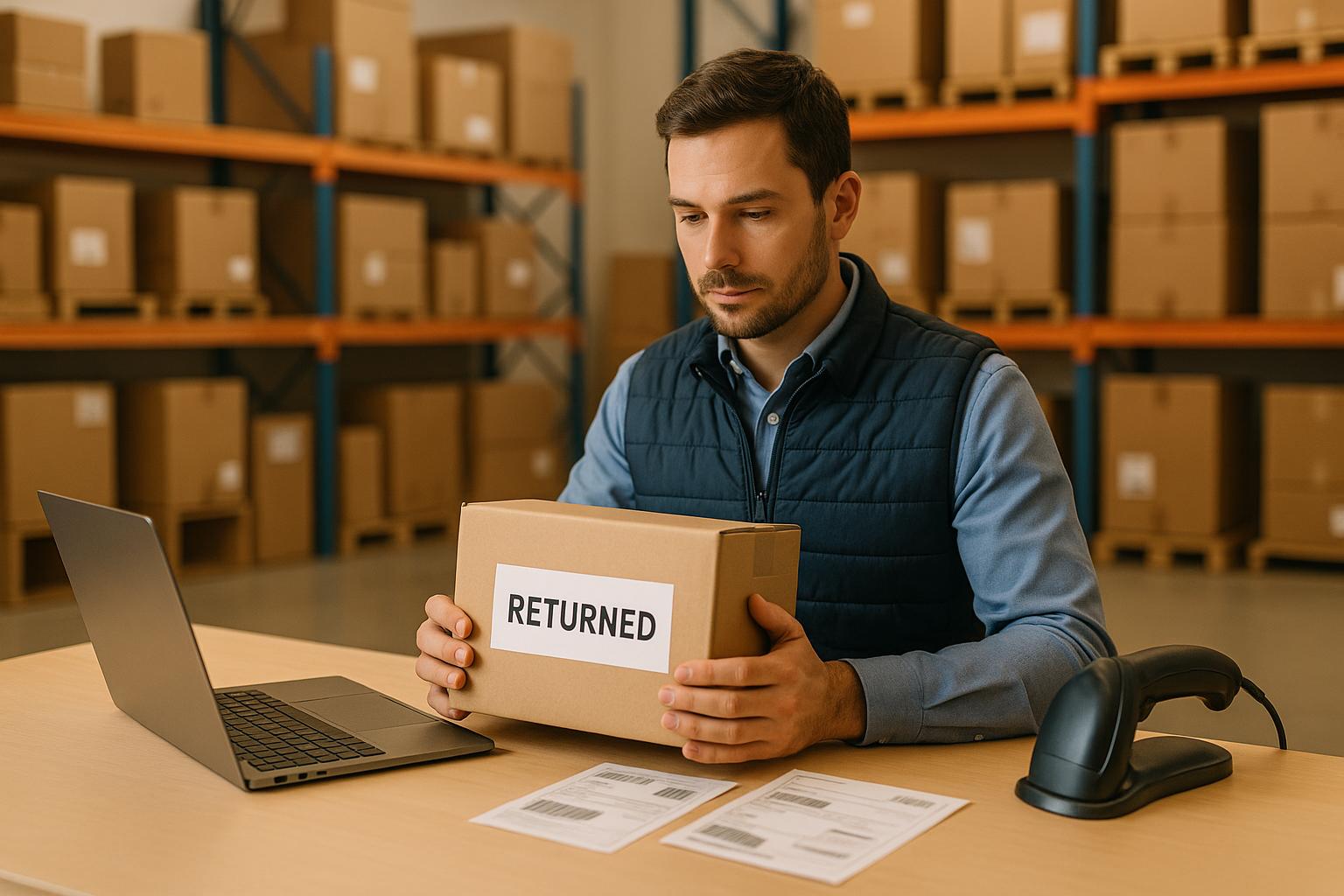
3PL Returns Handling: Step-by-Step Guide
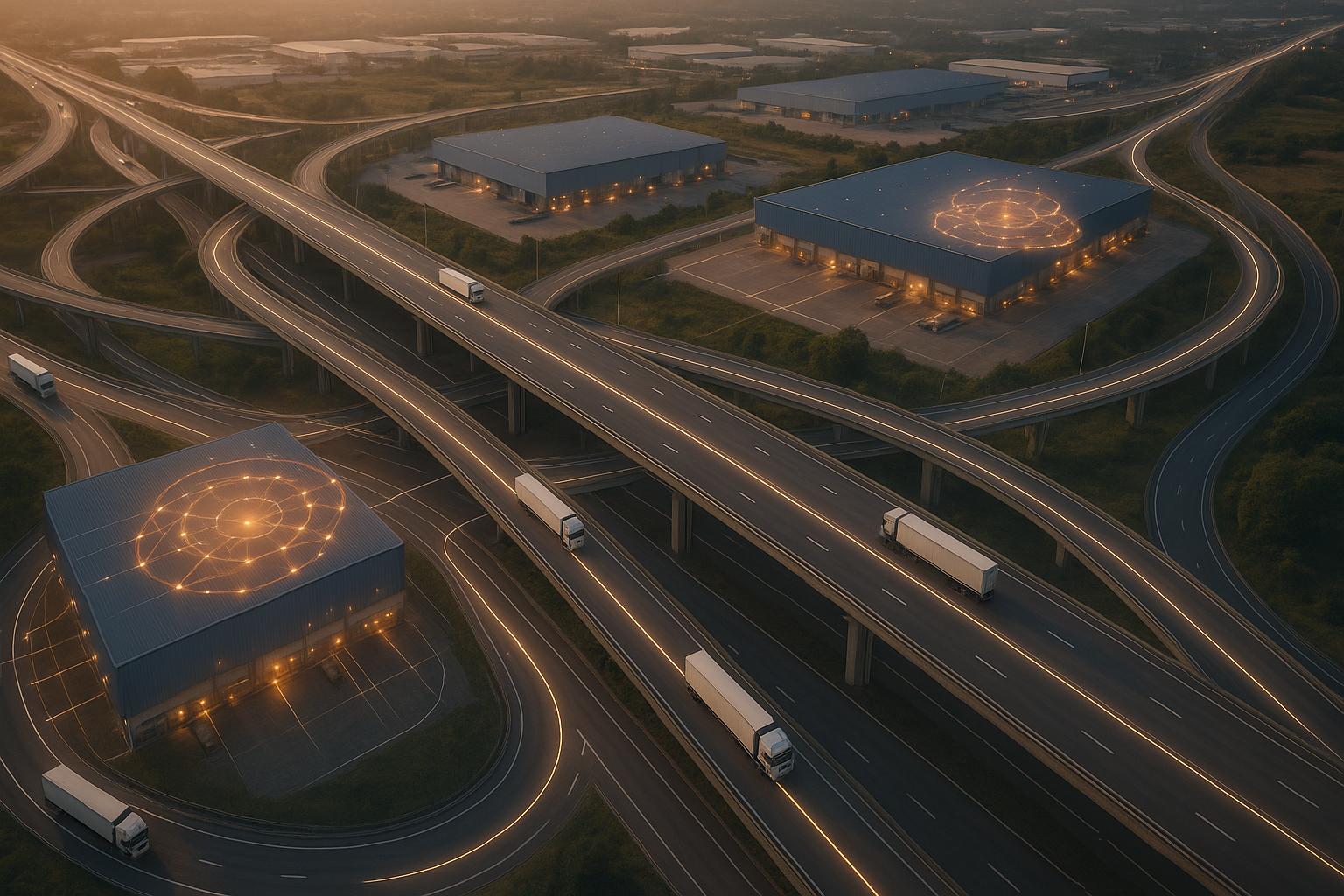
Ultimate Guide to Predictive Analytics in Logistics
